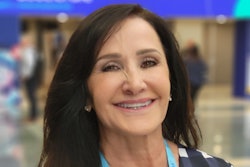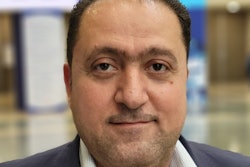
ORLANDO - A longstanding collaboration between the Healthcare Information and Management Systems Society (HIMSS) and the Society for Imaging Informatics in Medicine on enterprise imaging topics remains highly active, according to a HIMSS 2022 session.
Launched in 2013, the HIMSS/SIIM Enterprise Imaging Community has actively worked toward the advancement of enterprise imaging strategies via activities such as workgroups, webinars, and white papers, according to Tammy Kwiatkowski, senior director of clinical informatics at HIMSS. And much more is in the works, including an effort to develop a standardized imaging ontology for body parts
Over the nearly 10 years of collaboration, the HIMSS/SIIM Enterprise Imaging Community also participated in the development of the Digital Imaging Adoption Model (DIAM), which is a maturity model that's designed to help healthcare organizations make the most of their clinical imaging investments and resources and serve as a roadmap for digitally transforming clinical imaging across the enterprise, she said.
Some changes are also coming to the DIAM over the next year, Kwiatkowski said.
Current workgroups
The HIMSS/SIIM Enterprise Imaging Community also has several current workgroups, including the Photodocumentation Workgroup. Chaired by Dr. Cheryl Petersilge of the University of Pittsburgh Medical Center, this workgroup aims to provide a forum for discussing the clinical and technical challenges and opportunities associated with photodocumentation – a subset of visible light imaging.
"Medical videography and photographs are used to document clinical conditions, support diagnosis, guide, and document procedures to enable collaboration among colleagues," said Nikki Medina, director of education for SIIM. "They also play a significant role in patient engagement and are a mechanism for patients to share information for their providers. The content of medical photographs raises issues for acquisition, management, storage, and access."
This workgroup published a whitepaper focusing on clinical aspects of visible light images and are currently focusing on their next paper, which is focusing on technical aspects, Medina said.
Interactive multimedia reports
Meanwhile, the Interactive Multimedia Reporting Workgroup provides a multidisciplinary forum for discussion of clinical/technical challenges. It's co-chaired by Dr. Les Folio of the U.S. National Institutes of Health Clinical Center; David Kwan of Cancer Care in Ontario; and Elliott Silver of Argentix Informatics.
This workgroup published a precursor whitepaper in June 2021 for future efforts towards solving technical issues that are impeding the routine creation of interactive multimedia reports and their ingestion into the electronic health record (EHR), Medina said. Another paper on clinical considerations for interactive multimedia reports has been submitted for peer review to the Journal of Digital Imaging.
Furthermore, the group has moved on to developing an interactive multimedia reporting technical profile, according to Medina.
"So look to receive some documentation for public commenting later this spring on that," Medina said.
Another workgroup, the Data Standards Evaluation Workgroup, analyzes existing standards
for nomenclature related to body part and anatomic region, for purposes of multidisciplinary relativity and systems interoperability delivered internally and externally across healthcare organizations, according to Medina. It's led by Dawn Cram of The Gordian Knot Group
"There really is no one standardized ontology out there being used," Medina said. "And the goal of this workgroup is to evaluate all of these different ontologies in the healthcare spectrum and report out to the community on what these various ontologies have, how can they meet our needs, and the pros and cons of each."
Body parts terminology
The latest project in the works is an effort to develop what they call body parts standardized imaging terminology (BPSIT), Medina said.
Enterprise imaging is at a very early crossroads, Medina noted. The ability to meaningfully share medical images between entities or even internally depends on having a common language.
"Today we rely on a lot of translators, such as data values, codes, and 'crosswalks,' to establish a common understanding of information in disparate sources," she said.
This approach treats the symptom, however, and it doesn't solve the root cause -- the failure to deploy a universal medical terminology, Medina said.
"What we will do is work together to talk with the community, bring vendors together, bring institutions, and come to some kind of consensus that will lead us forward to better interoperability," she said.
The adoption of standard medical terminology for clinical systems is critical to improve interoperability, patient safety, and patient outcomes, said Dr. Alex Towbin of Cincinnati Children's Hospital.
The project will not create a brand-new ontology; instead, the goal is to leverage current existing ontologies and standards and achieve consensus across the healthcare community, Medina said.
The future
Medina noted that the HIMSS/SIIM Enterprise Imaging Community has published over 12 peer-review white papers to provide guidance to the community on enterprise imaging. And more are in the pipeline.
New workgroups will also be launched later this year.
"We're always evolving, always moving towards a better future, and we are looking for new topics," Medina said. "So we need to hear from you all on what challenges you are focusing on and finding in your organizations."



















